1. AlayaCare

Duration : 1 minute and 12 seconds
Drowning in home care complexities? An animated instructional guide video for AlayaCare appears as a beacon, illustrating freedom from operational overload. More than mere software features are presented; its about paving new paths for efficiency, leading to enriched care experiences. The videos strength lies in visually translating intricate solutions into simple concepts, instantly graspable for any viewer.
AlayaCare distinguishes itself by directly tackling core industry hurdles. It speaks to the need for smoother scheduling, enhanced team communication, and stronger client connections, positioning itself as the vital tool to achieve these advancements. Its about shifting the paradigm, liberating resources to truly focus on whats paramount€” nurturing both patient health and caregiver satisfaction. The review aims to spark a vision of operational ease enabling better care delivery.
Simple color palettes and clean lines improve clarity and memorability.
2. Emburse Animated Business Guide

Duration : 1 minute and 10 seconds
Immediately, Emburse distinguishes itself with a video that doesn't just explain, it elucidates the cumbersome nature of traditional expense reports. Through relatable animation, the video pinpoints universal frustrations with time-consuming reimbursement processes. Its not merely showcasing a product, but rather empathizing with a prevalent business challenge.
What truly resonates is how this animated instructional guide video visualizes Emburse as the seamless solution. The video adeptly uses clean, modern graphics to mirror the platforms promise of efficiency and transparency. By focusing on the tangible benefits of simplified expense management, Emburse inspires viewers to envision a more streamlined, less stressful future for their businesses.
Integrate your product seamlessly into familiar workflows to boost user confidence.
3. Citrix Animated Tech Tutorial

Duration : 1 minute and 36 seconds
Threats lurking in finance's digital realm are not abstract anxieties, but vivid realities, which Citrix expertly visualizes. Rather than showcasing features, the video uses crisp animation to illustrate the urgent need for advanced analytics in our intricate digital ecosystems. Vulnerabilities become palpable risks, depicted with impactful simplicity.
Citrix DaaS Analytics steps forward as the clear answer, avoiding technical overload and instead, graphically revealing its preemptive monitoring and defense mechanisms. This animated instructional guide video cleverly employs a magnifying glass symbol, underscoring its comprehensive network and device analysis. The dashboard simplifies intricate data streams into actionable insights, empowering clear oversight. The narrative prioritizes understanding, persuasively arguing for its analytical strength.
Visualize complex processes with clear animations to boost viewer comprehension and engagement.
4. Chainlink Animated Guide Tutorial

Duration : 1 minute and 41 seconds
Smart contract functionality is elegantly demonstrated in this animated instructional guide video. The video's clean design and dynamic animations make complex blockchain concepts accessible, showcasing Chainlink's secure data solutions. The clear visuals effectively communicate the importance of reliable data for smart contracts.
This concise explanation of Chainlink's role as a decentralized oracle network is highly effective. The video's simple yet sophisticated aesthetic makes it a great example of how to explain complex technical information in an engaging way.
Strategically place text and call-to-actions to guide viewers through the process smoothly.
5. Logicom Minimalist Animated Guide

Duration : 2 minutes and 26 seconds
Imagine navigating the complexities of modern IT with intuitive ease, Ciscos video spotlights Meraki as the navigator. Moving beyond mere feature listing, this video compellingly showcases operational elegance. The crisp animation paired with focused messaging, immediately draws viewers into a narrative of simplified network control.
Challenges of escalating device counts and tightening security are visually addressed, positioning Meraki not just as a tool, but as a strategic asset. The video excels in transforming technical details into easily understandable benefits. As a concise Feature Demonstration Guide Video, it adeptly communicates Meraki's value, inspiring confidence in its streamlined approach and robust features.
Visually highlight key benefits with simple, expressive animations to drive understanding and interest.
6. ProSolution Animated Feature Overview Video

Duration : 1 minute and 16 seconds
ProSolution's Feature Exploration Guide Video immediately captivates with its dynamic visuals. The five-star rating, symbolizing top performance, and the clear depiction of learner information management are particularly impressive. This 74-second video effectively communicates the software's value.
The seamless integration with other Advanced products and the emphasis on accurate funding claims further solidify its appeal to educational providers. Custom reporting and live dashboards are also showcased, making the software's comprehensive nature evident.
Fast-paced animation keeps viewers hooked, boosting understanding and sparking interest.
7. State Street Minimal Motion Design Video

Duration : 2 minutes and 21 seconds
State Street's innovative approach to financial technology is showcased in this Features Overview Guide Video. The clean animation style and concise visuals effectively communicate the complexities of the Venturi platform, making it accessible to financial institutions and investors. The video clearly targets its audience, focusing on efficiency and transparency.
Venturi's features are presented with a compelling visual narrative. The video's success lies in its ability to translate complex financial processes into easily understood concepts. This makes it a highly effective demonstration of the platform's capabilities, leaving a lasting impression on viewers.
Simplify complex topics with clear visuals, boosting viewer understanding and engagement.
8. Hotjar 2D Animated Explainer Video

Duration : 1 minute and 25 seconds
Data overload got you down? This animated instructional guide video shows how Hotjar filters can rescue you. The video uses simple, effective visuals to demonstrate the process of applying multiple filters, like date range and event type, resulting in clearer insights.
The step-by-step approach, combined with concise on-screen text, makes the complex process easy to understand. This makes it a great example of how to create a clear and effective tech demo. Try Hotjar filters today!
Focus on the "aha!" moment—the point where viewers grasp the solution—to create a satisfying experience.
9. SurveyMonkey 2D Motion Graphics Video

Duration : 1 minute and 3 seconds
Ceipal's recruitment platform explainer advert video showcases its dynamic power. The video vividly depicts the platform's comprehensive capabilities, transcending conventional resume sifting.
It provides a centralized hub for tracking applicants, managing workforce, and promoting diversity hiring. The video uses clever animations and concise overlays to simplify complex features, making the user interface accessible.4The inclusion of screen recordings demonstrating functionalities such as candidate engagement and analytics reinforces Ceipal's innovative approach and user-friendly design in today's competitive hiring landscape.
Animate the user experience. this creates a compelling demo that drives conversions.
10. Wonolo Animated Process Explainer Video

Duration : 1 minute and 5 seconds
Efficient staffing solutions are now easier than ever. This animated instructional guide video cleverly uses visual metaphors to showcase Wonolo's benefits. The warehouse setting immediately highlights the problem, while the app's interface is shown with clarity.
The video's concise presentation focuses on ease of use and speed, emphasizing the positive partnership between businesses and workers. The final scene, showing successful collaboration, reinforces the positive impact of Wonolo.
Showcase your product's ease of use with simple, joyful animations to boost viewer confidence.
11. 6sense Motion Graphics Marketing Guide

Duration : 1 minute and 57 seconds
6sense's Product Walkthrough Guide Video cleverly uses animation to explain complex sales processes. Simple stick figures illustrate customer engagement, making the information accessible. The video's concise length and clear visuals ensure key messages resonate with sales and marketing professionals.
Visual metaphors, such as the funnel and bar charts, effectively represent the sales journey and customer engagement. The green and red color scheme is striking, and the minimalist style keeps the focus on the product's capabilities. This is a strong example of clear communication.
Craft a clear storyline; viewers connect with narratives, boosting engagement.
12. PropheSee Animated Character Marketing Video

Duration : 1 minute and 48 seconds
Data overload got you down? PropheSee's Explainer User Adoption Guide Video offers a refreshing solution. This concise video effectively demonstrates how the software simplifies data analysis for marketing professionals and business owners.
The animation is vibrant, the visuals are clear, and the pacing is perfect. PropheSee's ability to provide actionable insights and a competitive edge is powerfully conveyed, making this a great example of an effective explainer video.
13. Siemens

Duration : 1 minute and 7 seconds
Intriguing visuals make this Explainer User Guide Video a standout. The effective use of 2D and 3D animation simplifies complex industrial processes, making the information accessible to a wide audience. The video's concise presentation keeps viewers engaged, focusing on user-friendly interfaces and time-saving features.
Siemens' DCS is showcased as a solution to the challenges of managing complex plant control systems. The video cleverly uses checkmarks to visually represent successful automation, and a city skyline illustrates the broad applicability of the solution. The call to action is clear and effective, encouraging viewers to learn more.
Positive visuals and a confident tone inspire viewers to consider your solution.
14. CareStack

Duration : 1 minute and 44 seconds
Overwhelmed by billing complexities? This Feature Explanation Guide Video shows how CareStack streamlines dental practice revenue cycles. It effectively uses visuals to illustrate the challenges and the software's solutions, making complex concepts easy to understand.
The video's clear animation and strong call to action leave viewers wanting to learn more about how CareStack's user-friendly interface can reduce costs and improve efficiency, boosting patient care. The software's features are presented concisely, highlighting benefits like automated tasks and improved collections.
15. Bandwidth

Duration : 1 minute and 31 seconds
Powerful visuals drive this Feature Usage Guide Video, showcasing global reach and innovative potential. The cinematic style and dynamic camera work create an engaging experience, leaving a lasting impression.
Bandwidth's video successfully communicates its vision, emphasizing collaboration and progress. The focus on the bigger picture makes it broadly appealing, targeting businesses, entrepreneurs, and innovators seeking inspiration. The dual language voiceover further enhances its global appeal.
16. TRIMIT

Duration : 1 minute and 31 seconds
Does this Tech Platform Ui Guide Video resonate with you? It expertly showcases TRIMIT's features, using clean animation and concise visuals. The 3D elements enhance the presentation without being distracting.
TRIMIT's value proposition is clearly communicated, highlighting its benefits for furniture businesses. The software's integration with Microsoft Dynamics 365 Business Central and its impressive user base are effectively conveyed. Real-time visibility and cost savings are also emphasized.
Craft a clear narrative; storytelling makes complex info easy to grasp.
17. PointClickCare

Duration : 1 minute and 3 seconds
Hospital case managers' daily struggles are vividly portrayed. This Technology Product Getting Started Guide Video showcases Harmony's ability to simplify complex processes. The clear, concise animation style effectively communicates the software's core functionality.
Visual representations of data exchange and network building are particularly effective. The video successfully conveys the benefits of improved transparency and access to patient information, leaving viewers wanting to learn more about Harmony's capabilities.
18. Confiz

Duration : 1 minute and 35 seconds
Confiz's software streamlines retail operations. The Technology Product Ui Guide Video uses crisp animation to illustrate how the platform handles online checkouts, data analytics, and personalized marketing.
Visuals of dashboards and mobile interfaces showcase the software's ease of use and its impact on customer engagement. The video effectively demonstrates how Confiz CDMS boosts ROI and customer acquisition by optimizing marketing efforts across multiple channels.
19. Speakfully Motion Graphics Tutorial

Duration : 58 seconds
Dramatically revealing a concerning reality in workplaces, this animated user guide feature video effectively introduces Speakfully, emphasizing the widespread misconduct and the fear that prevents reporting. Through clean animations and a bright palette, the video illustrates a simple, confidential process for employees to report issues, either online or via hotline.
The explainer showcases the platform's intuitive interface and its capability to track and update on reported issues, demonstrating how Speakfully can improve employee experience and workplace trust. It also highlights the partnership with HR Acuity, underlining the potential of the platform to protect company reputation and build an ethical, safe and secure work environment.
Design for empathy; viewers connect with relatable characters.
20. Rieter

Duration : 1 minute and 24 seconds
Isometric graphics transform the ESSENTIALbasic platform into a captivating animated instructional guide video. The futuristic visuals and seamless transitions create an engaging experience, easily showcasing the software's capabilities to textile professionals.
The video effectively highlights key features like online ordering and the Spinners' Guide, demonstrating how it simplifies daily tasks and empowers expertise. A concise call to action leaves viewers wanting to explore the platform further.
21. Sugar Market

Duration : 1 minute and 45 seconds
Sugar Market's video immediately grabs attention with its dynamic visuals. This animated instructional guide video cleverly uses vibrant colors and simple shapes to explain a complex product. The concise visuals, focusing on data visualization (pie charts, graphs) and automation, effectively communicate key features. The video is approximately 1 minute 40 seconds long.
The strategic use of close-ups on employee faces and collaborative office scenes makes the software relatable. This approach, combined with the clear depiction of cloud integration and data analysis, successfully showcases SugarCRM's capabilities for improving customer experience. The result is a polished and informative presentation.
22. Alation

Duration : 1 minute and 19 seconds
User-friendly data management is showcased brilliantly. This animated instructional guide video cleverly uses a data museum metaphor to highlight the problem of outdated systems, then contrasts it with Alation's collaborative platform. The video's clear visuals and concise storytelling make complex information accessible.
Efficient workflows and a thriving data community are effectively depicted. The video's modern minimalist aesthetic and smooth transitions keep viewers engaged. The call to action is subtle yet effective, encouraging viewers to learn more about Alation's capabilities.
23. Silvercloud Motion Graphics App Guide

Duration : 2 minutes and 5 seconds
Focusing on mental well-being, SilverCloud's animated instructional guide video stands out. The paper-cut animation style, combined with clear visuals of the app's features and progress tracking tools, makes the information accessible and engaging. The video effectively communicates the app's CBT approach, offering both self-guided and coach-supported options.
SilverCloud's platform provides a private space for users, accessible across various devices, offering global mental health support. The video's visual metaphors and concise messaging effectively convey the app's benefits, making it a great example of an informative and emotionally resonant brand video.
Let your app's personality shine through your animation, building trust.
24. OpenText

Duration : 1 minute and 57 seconds
Efficiently conveying complex information, this animated instructional guide video stands out. The clear visuals, like the document-to-data transformation and the time-saving pie chart, are highly effective. A professional voice-over enhances understanding.
OpenText's Intelligent Capture is presented with a polished aesthetic. The user-friendly Human in the Loop UI, flexible deployment options (on-premise and cloud), and compatibility with leading cloud providers are subtly highlighted, making this a strong example of technical product explanation.
25. Diligent

Duration : 1 minute and 7 seconds
Effective communication of ESG solutions is key. This animated instructional guide video immediately grabs attention with its dynamic visuals, clearly illustrating the importance of ESG initiatives for stronger company performance. The video's concise messaging and modern aesthetic resonate with its target audience of corporate leaders and sustainability professionals.
Diligent ESG's platform is presented as a solution for streamlining greenhouse gas reporting and data collection, simplifying carbon calculations, and providing a comprehensive overview of sustainability efforts. The video successfully conveys the platform's ability to generate consistent reports across multiple standards and frameworks, ultimately turning sustainability promises into action.
26. Skybox Security

Duration : 2 minutes and 10 seconds
Compelling visuals define this Animated Tech Platform User Guide Video. The 3D animation of the DDR4 chip, highlighting its compact size and functionality, is superb. Technical details are presented with impressive clarity, making complex information easily digestible.
The video's success stems from its ability to translate technical specifications into captivating visuals. Thermal simulations and schematic diagrams effectively communicate the chip's capabilities and resilience. The concise presentation ensures the information remains impactful.
27. Google

Duration : 2 minutes and 49 seconds
Personalized learning is made easier with Google's introduction of Practice sets, showcased as a solution to the feedback challenges educators encounter. This Animated Technology Product User Guide Video effectively illustrates the need for more efficient tools, moving from the visual of students using different devices to an educator overwhelmed with requests. The video then emphasizes how interactive assignments and automated insights can revolutionize teaching methods.
The enhanced features shown are to help students get answers to questions, provide learning resources while teachers gain automated comprehension insights. The new features with autograding and space to showcase their work, build engagement and confidence. The video highlights teachers reviewing class performance and adjusting their plans. The feature aims to offer faster help for students and beneficial insights for teachers, while supporting all learning approaches.
28. Process Street Software Animation Guide

Duration : 31 seconds
Process Street's software is brilliantly presented in this animated instructional guide video. The video's dynamic visuals and clear explanations make understanding the platform's features easy, showcasing task management and team collaboration. A visualized workflow example would further enhance the impact.
The video's concise nature, under 30 seconds, is a major plus. The combination of 2D and 3D animation adds visual interest, and focusing on specific target audiences like project managers would strengthen the message.
29. Acronis

Duration : 1 minute and 31 seconds
Acronis Cyber Protect Cloud's Feature Demonstration Guide Video immediately captivates with its striking visuals. The clever use of question marks transitioning to 1 powerfully communicates the solution's unifying power. This concise approach effectively showcases the platform's key features.
The video's high-quality 3D graphics and intuitive interface presentation are particularly impressive. Its pay-as-you-go model and advanced packs are subtly highlighted, appealing to service providers seeking flexible, cost-effective solutions. Consider exploring Acronis' website for more details.
30. Datacom

Duration : 1 minute and 20 seconds
Datacom's container service is brilliantly showcased. This Feature Exploration Guide Video uses a captivating Rubik's Cube to illustrate efficient deployment, targeting businesses and developers. The clean, isometric animation style enhances the professional feel.
The video effectively demonstrates the service's speed and agility, using a speedometer to visualize improved developer workflows. Customer support is highlighted, assuring users of comprehensive assistance. The solved Rubik's Cube symbolizes successful problem-solving and efficient application deployment.







































